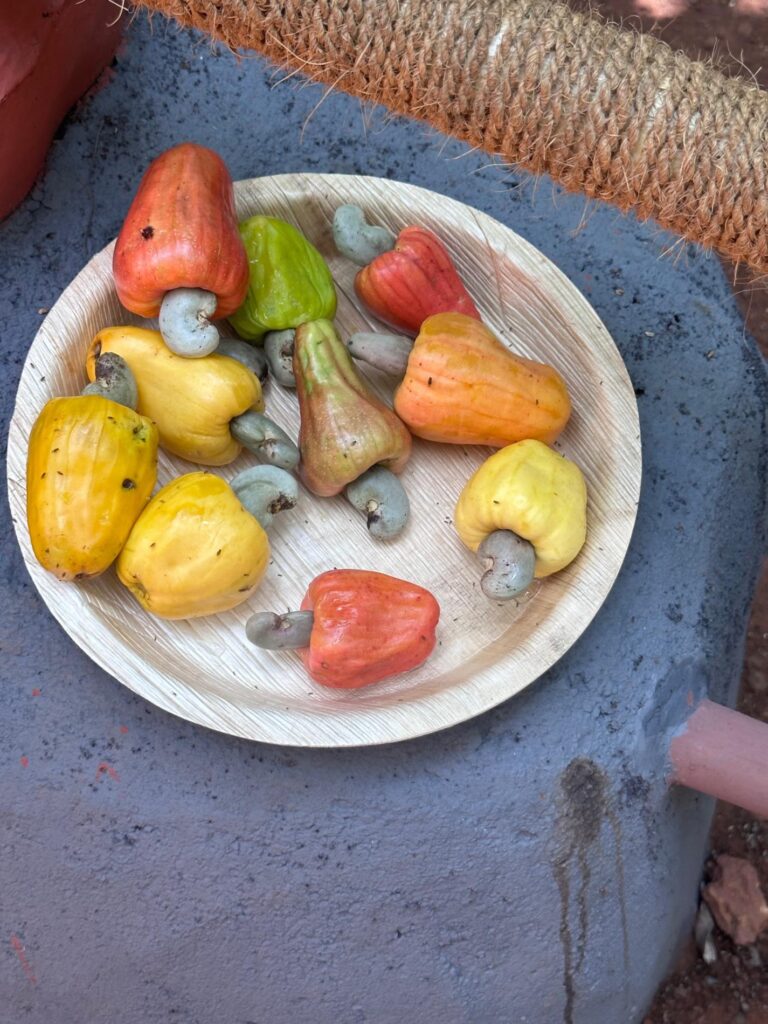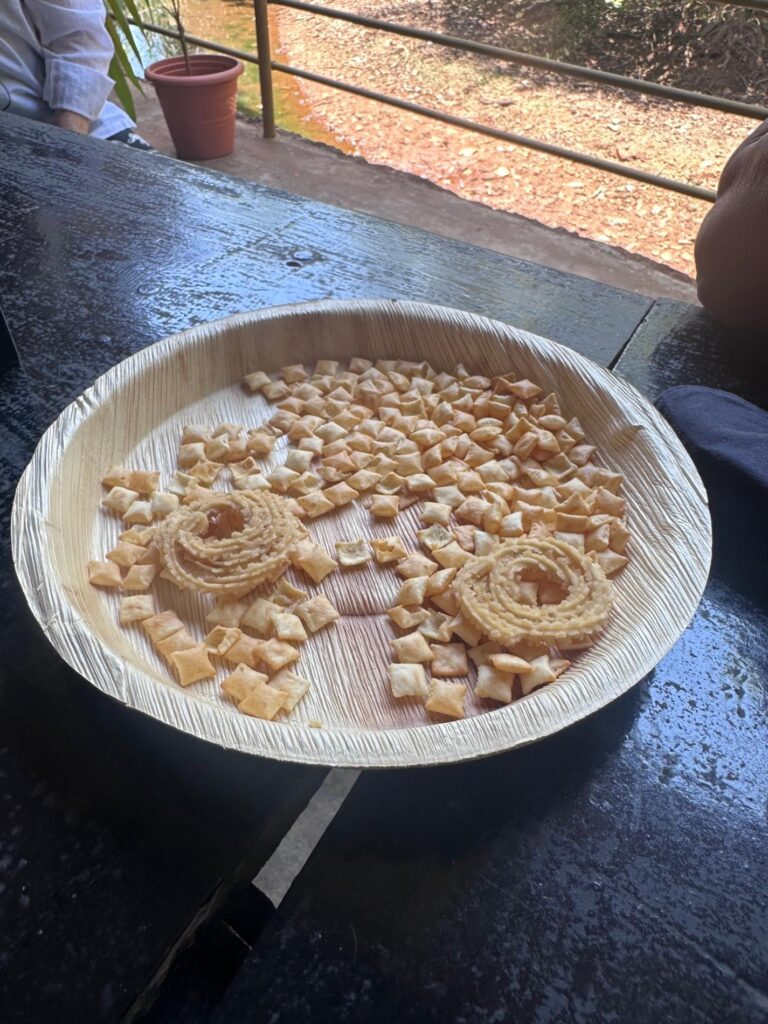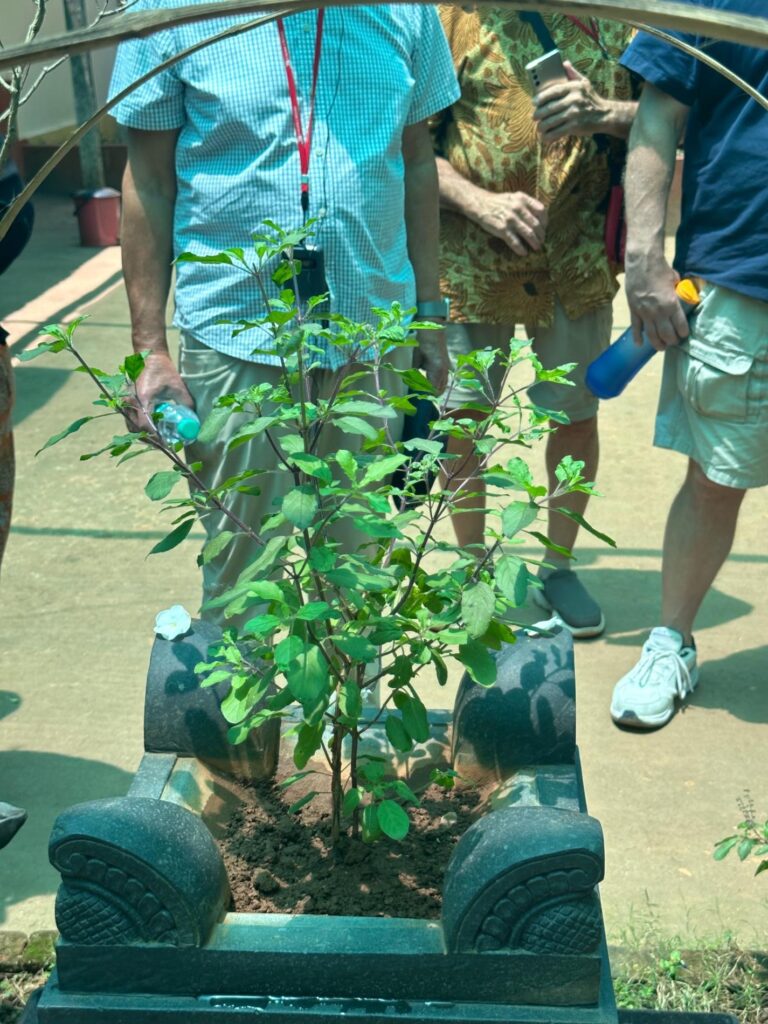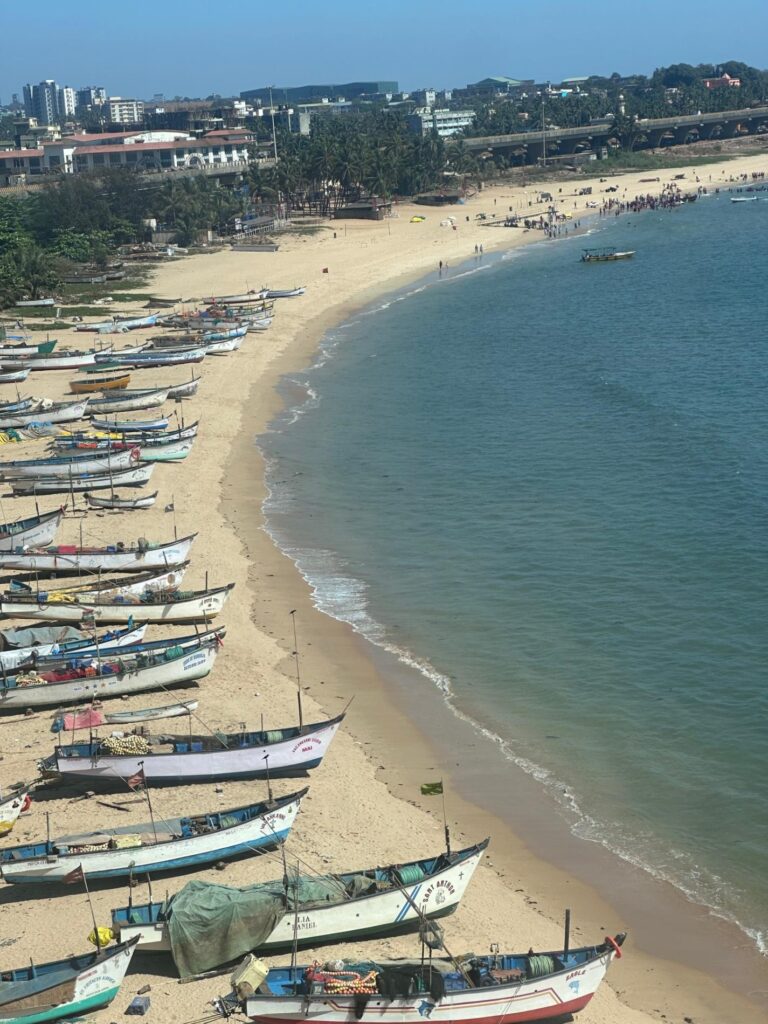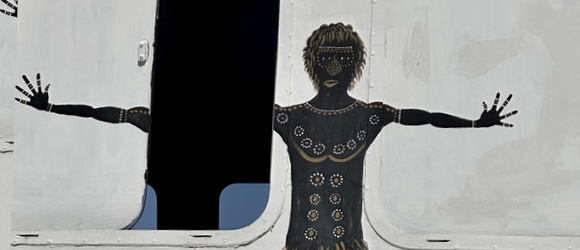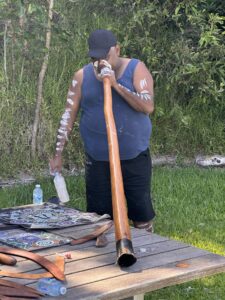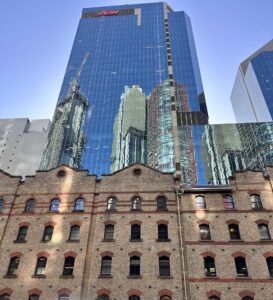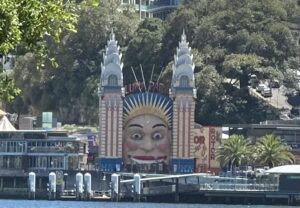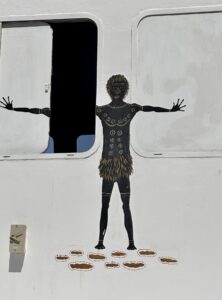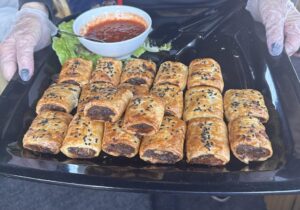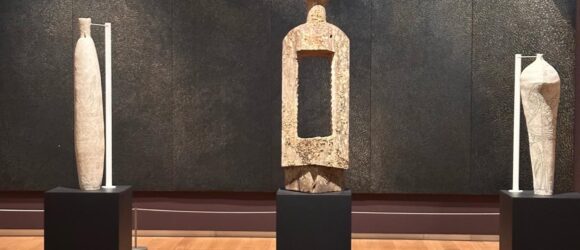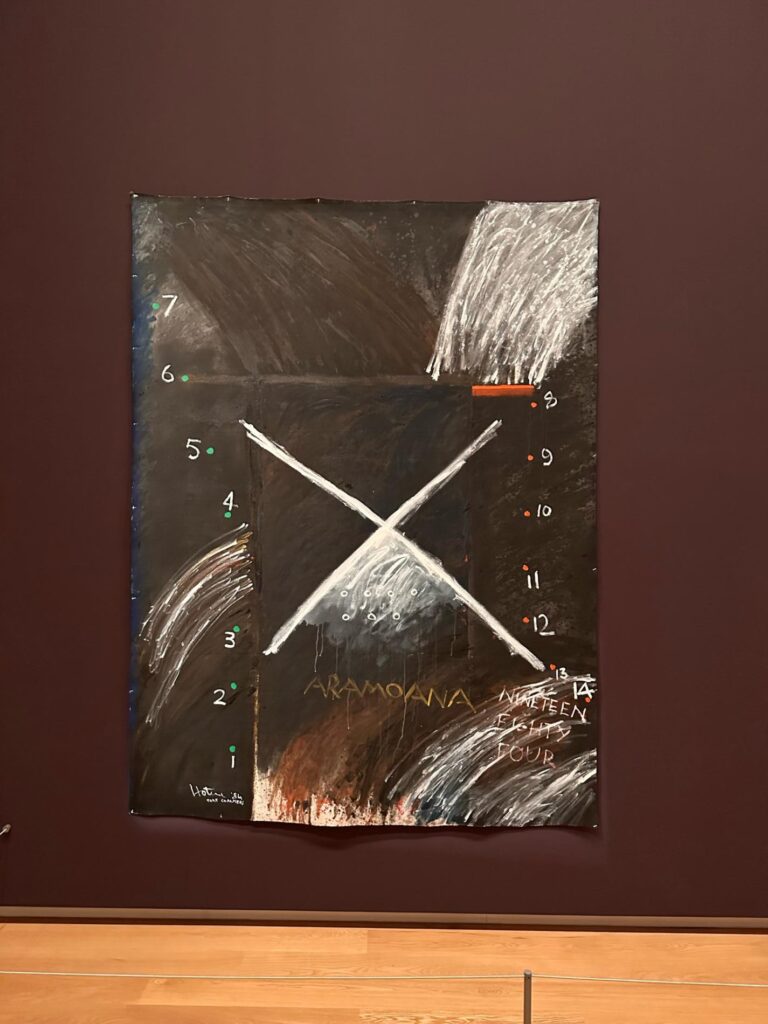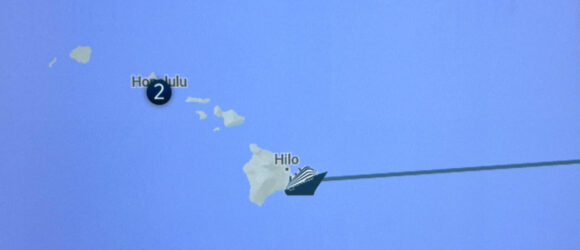Goa, Southern India
- At August 13, 2023
- By Jessica
- In Travel
 0
0
The state of Goa was the cultural center of Portuguese India for 450 years. Its capital is called Vasco da Gama City. This was the first region in India colonized by Europe, and the last to get its freedom in 1961. Nowhere in India, we've been told, is the colonial influence so prominent. About a third of Goans are Catholic and the colonial styles of the Old Town extend to many private homes. Among its magnificent cathedrals and monasteries, the Sé Cathedral is one of the largest churches in Asia. The Basilica of Bom Jesus, one of India's finest examples of baroque architecture, holds the remains of St.Francis Xavier, the city's patron saint. Hindu mosques and temples are also ubiquitous here….as are slums and heaps of trash.
Cave drawings prove that hunter/gatherers lived here at least 30,000 years ago. During the 16th and 17th centuries, the town was ravaged by malaria.It is one of the wettest areas in India and one of the most fertile. The climate lends itself perfectly to growing spices, especially pepper. It also provides the ideal habitat for crocodiles.
As an adjunct to the spice trade, Ayurvedic medicine is big here. Goa has 33 beaches (and 300 churches) and is known for having been a hippie Mecca in the 1960s. Goans are entitled to Portuguese passports and pride themselves on equal legal and financial protection for every man, woman, and child. Prior to Portuguese colonization, the Arab countries bought spices from Goan Muslims. The plantations were and are Hindu owned, often for hundreds of years in the same family. The local Muslims acted as middlemen due to the language barrier. When the Portuguese came they by-passed the local traders and dealt directly with the Hindus. They were desperate for pepper because salt cured meat only stays edible for 6 months but pepper preserved meat and fish for over two years. Also, pepper killed threadworm and other parasites. Feeding all those sailors during the Age of Exploration was no easy feat.
In light of this thirst for spices, and because we're maxed out on pagodas, temples, and mosques, we decided to visit an actual spice plantation.
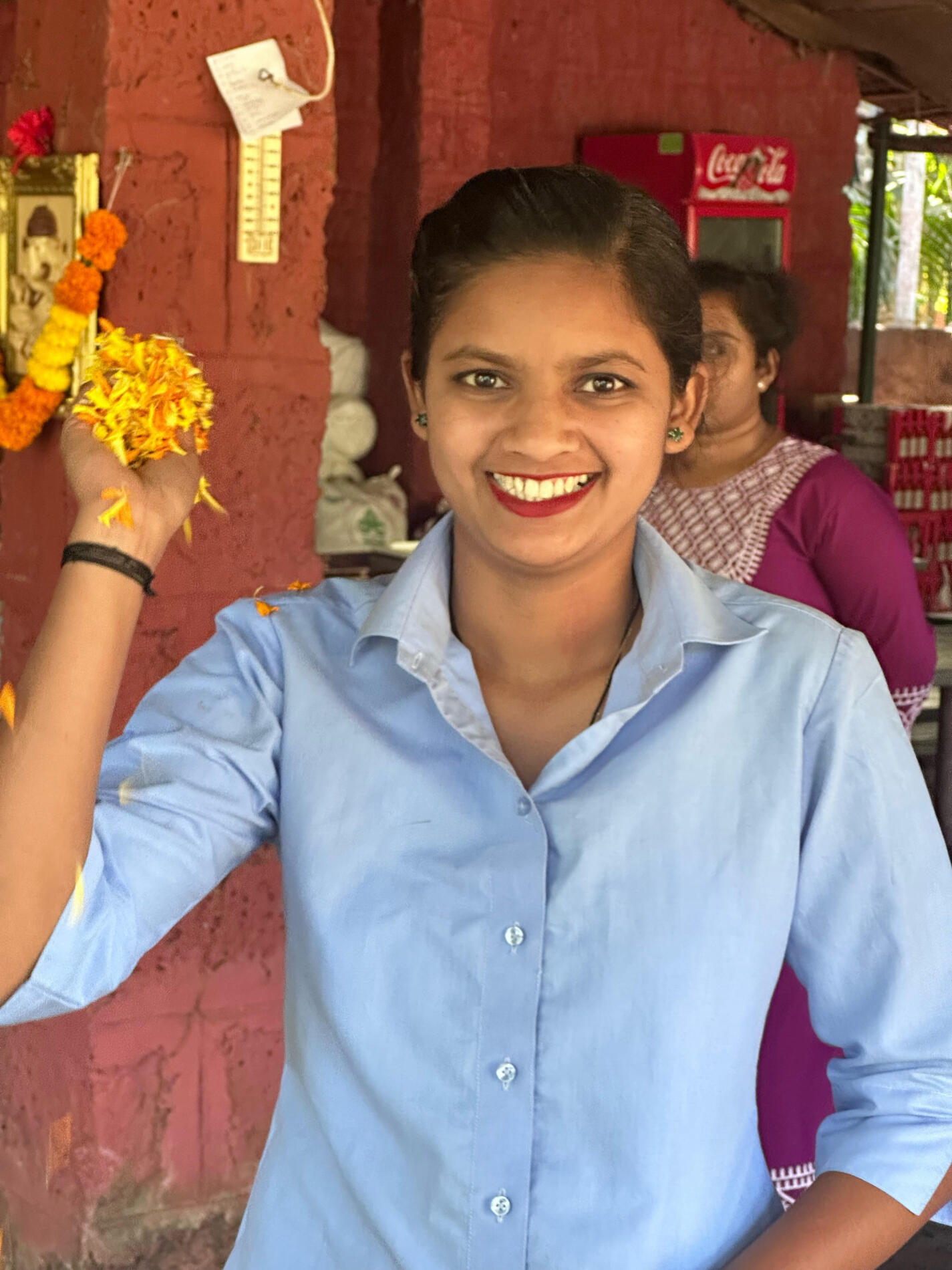
Here's a synopsis of what we learned down on the farm:
- Betelnuts were the first CBD gummies
- Fenni is a 40 proof alcoholic beverage made from the fruit of the cashew tree after the nut is removed.
- The biggest cash crop in Goa is the cashew!
- Pepper is a terrestrial parasitic plant. It has no leaves or chlorophyll of its own. The flowers smell terrible and are pollinated by flies and beetles.
- Pepper mixed with honey cures a cough.
- Pepper brewed as tea "eliminates" an upset stomach.
- Vanilla is also a parasite. The best vanilla comes from Madagascar where tiny indigenous hummingbirds pollinate the vanilla plants. Vanilla grows in Goa but the hummingbirds do not so the plantation uses toothpicks to pollinate the plants manually.
- The best cure for migraines is a tea brewed from lemongrass, ginger, and cardamom.
- Coconut trees live up to 300 years. They have no season and produce fruit four times a year
- Turmeric is used as an anti-bacterial and anti-cancer agent. Indian women mix it with yogurt to use as a face mask
- Cinnamon comes from the bark of the cinnamon but the leaves are used as a bay leaf substitute and the oil, called Indian Magic Oil, is extracted and applied for pain relief.
- Nutmeg (fruit) and mace (leaf) are from the same tree.
- Basil is called "holy" and the "Queen of Spices" because it increases the oxygen in the body and is basically good for everything (especially with tomatoes and mozzarella.)
- Chewing on green cardamom relieves motion sickness
A couple of other observations, not related to spices:
We have seen swastikas liberally painted throughout India and Sri Lanka.
According to our guide, it is a Hindu symbol of peace. According to Google,
"The word swastika comes from Sanskrit, meaning 'conducive to well-being'. In Hinduism, the right-facing symbol (clockwise) is called swastika, symbolizing surya('sun'), prosperity and good luck, while the left-facing symbol (counter-clockwise) is called sauwastika, symbolising night. In Jain symbolism, it represents Suparshvanatha – the seventh of 24 Tirthankaras (spiritual teachers and saviours), while in Buddhist symbolism it represents the auspicious footprints of the Buddha."
Delightfully, there are little cows sitting everywhere along the roads like household pets sit on porches elsewhere.
Milkbones for Bovines, anyone?
Cartagena, Spain
- At August 06, 2023
- By Jessica
- In Travel
 0
0
Port of Cartegna as we docked
The Old City is a marble paved pedestrian zone, lined with outdoor cafes and beautiful art nouveau architecture from Cartegna's heyday as a mining center.
Surrounded by farmland and market gardens, the locals are never at a loss for fresh produce from "Europe's orchard," as this fertile corner of Spain is often called. Our guide said that within a day of picking fruit and vegetables from Cartegna they are for sale in Paris, London, and Rome.
The city was founded in 227 BC by the Carthaginians. They called it Qart-Hadast = New City. Ancient Carthage is now modern day Tunisia. The Punic Wars took place over 43 years between 264 BC and 146 BC between Carthage in North Africa wanting to expand North and Rome wanting to expand South. It's all a bit confusing but the Carthaginians are the same people as the Phoenicians, from whom the name of the Punic Wars is derived.
Hannibal, real name Anibal Barca, was head of the Carthaginian Army. I'd always heard of him and his elephants but could never really place him in context until now. He and his elephants marched from Cartegna to Rome in 219 BC over the Pyrenees in an attempt to capture Rome.
During the first Punic War Rome won Sicily and Carthage won Cartegna. They kept it for 20 years. In the second Punic War Rome won Carthage in three days. In the third Punic War, Rome destroyed Carthage completely.
The Punic Wall rampart in Cartegna is the only remains of the Carthaginians in Europe.
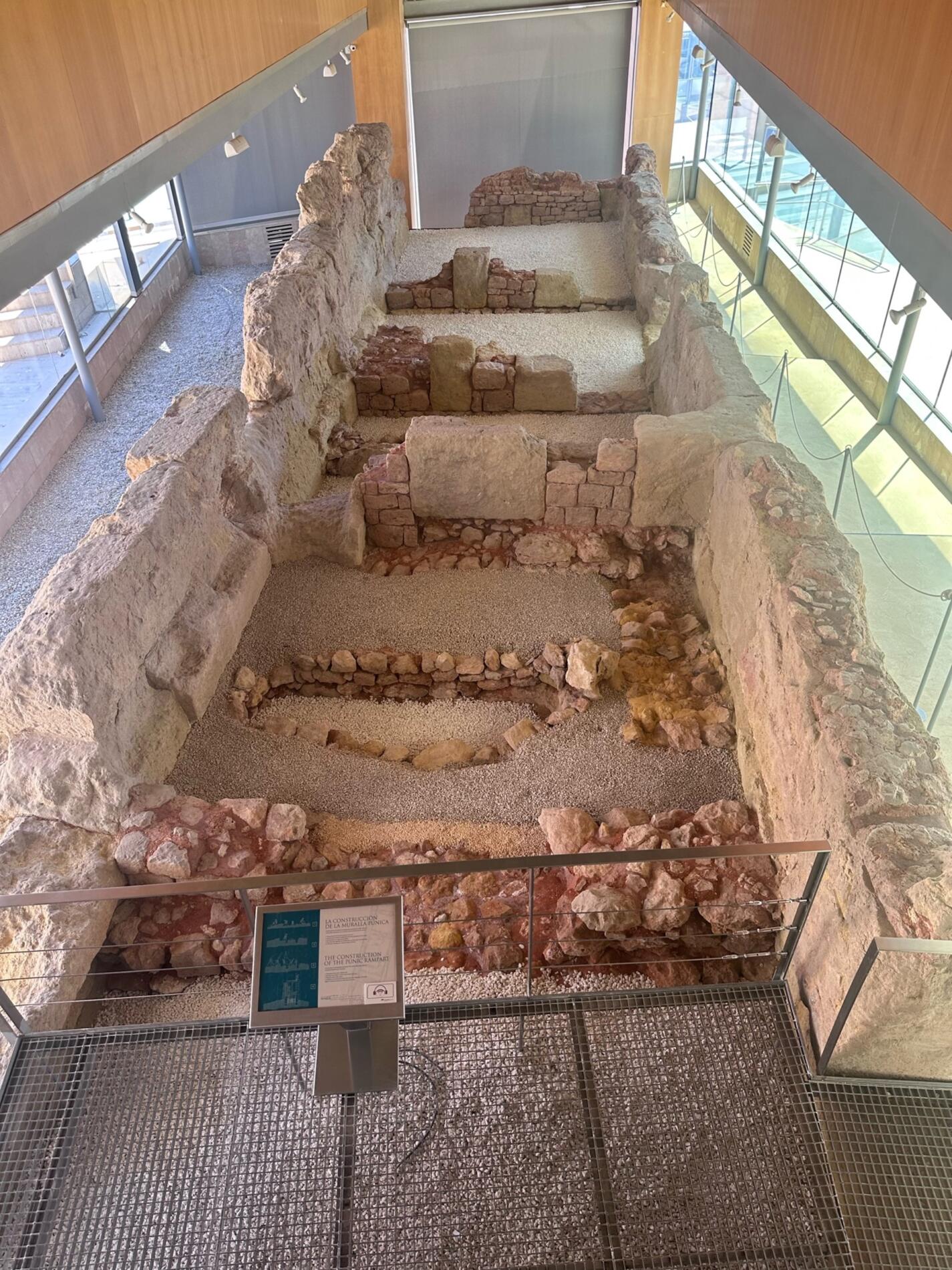
The Moors occupied the city from 825 AD and introduced a vast irrigation network for crops and for city use. They were expelled from Cartegna by Ferdinand Ill of Castile in 1243. Up until then, the residents used the sewers installed by the Romans. In 1243, the Christians abandoned the use of sewers bringing upon themselves all kinds of disease. The victory gave Castile access to the Mediterranean. 200 plus years later, Ferdinand of Castile and Isabella of Aragon married and in 1492 captured the last city, Granada, still under Muslim control. They expelled all Muslims and Jews from Spain.
Cartegna's province of Murcia remained a vassal kingdom until 1812 and became an autonomous region of Spain in 1982.
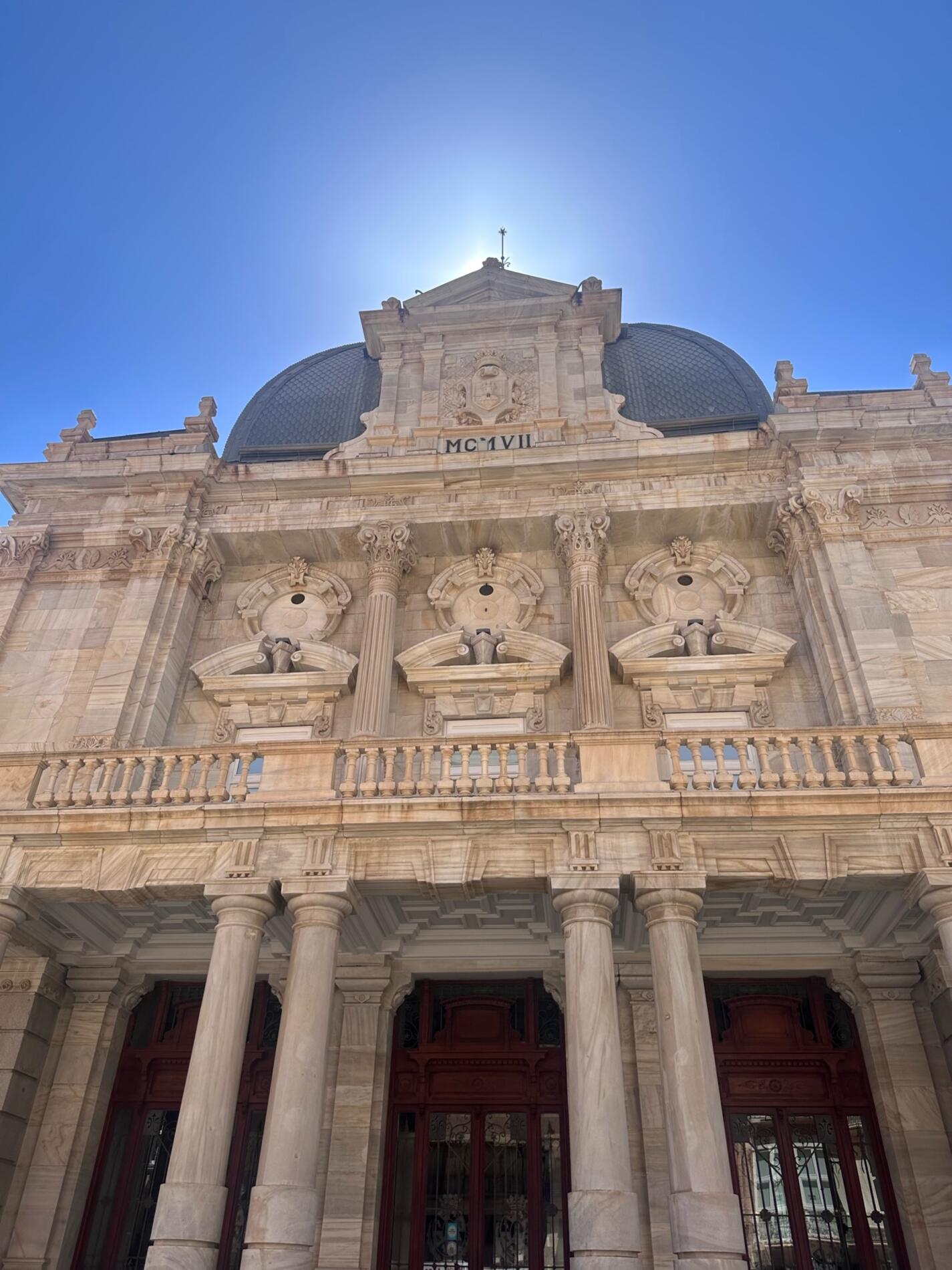
FUN FACT: The expression "Heads will roll" comes from Ancient Rome and refers to the removable heads on marble statues that were replaced when a new emperor came to power.
The 19th century gave rise to enormous lead, zinc, and iron mining fortunes. (The Romans depleted the silver mines during their tenure.) the last mine in Cartegna was closed in 1994. These tycoons built fabulous homes in the Art Nouveau style in the beginning of the 20th century. Most of them are bank branches today. (No surprise)
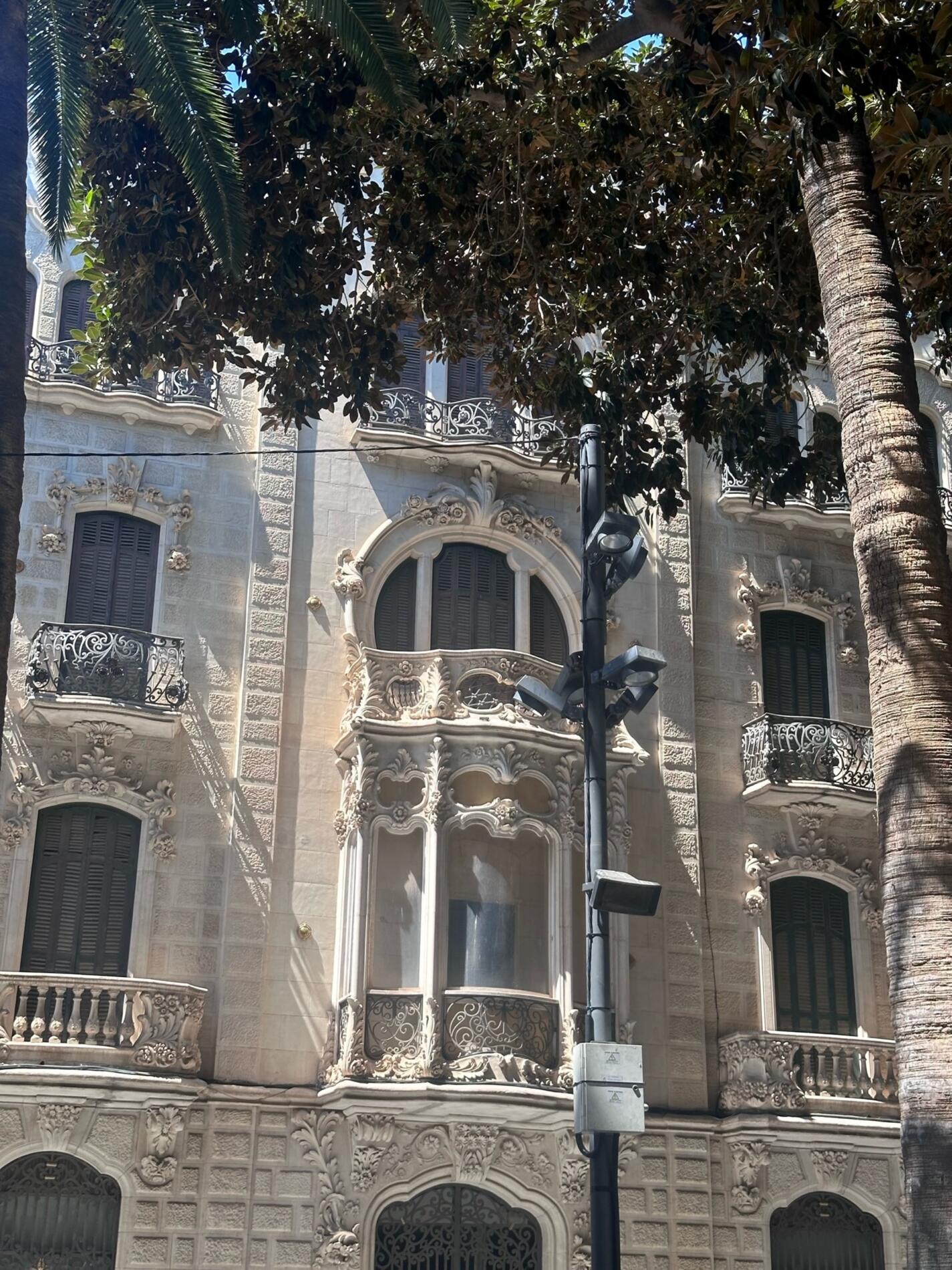
Franco ruled Spain under a fascist iron fist for 40 years. Only when he died in 1975 did Spain become a democracy. The fascists had no interest in preserving antiquities, which may explain why the Punic Wall, Roman Theater (1988), and House of Fortune (1971) weren't excavated until recently. The fascinating Crypt of San Jose was discovered at the same time as the Punic Wall.

EW FACT: The ancient Romans crushed black flies to use as mascara.
Found this sweet reminder of home:
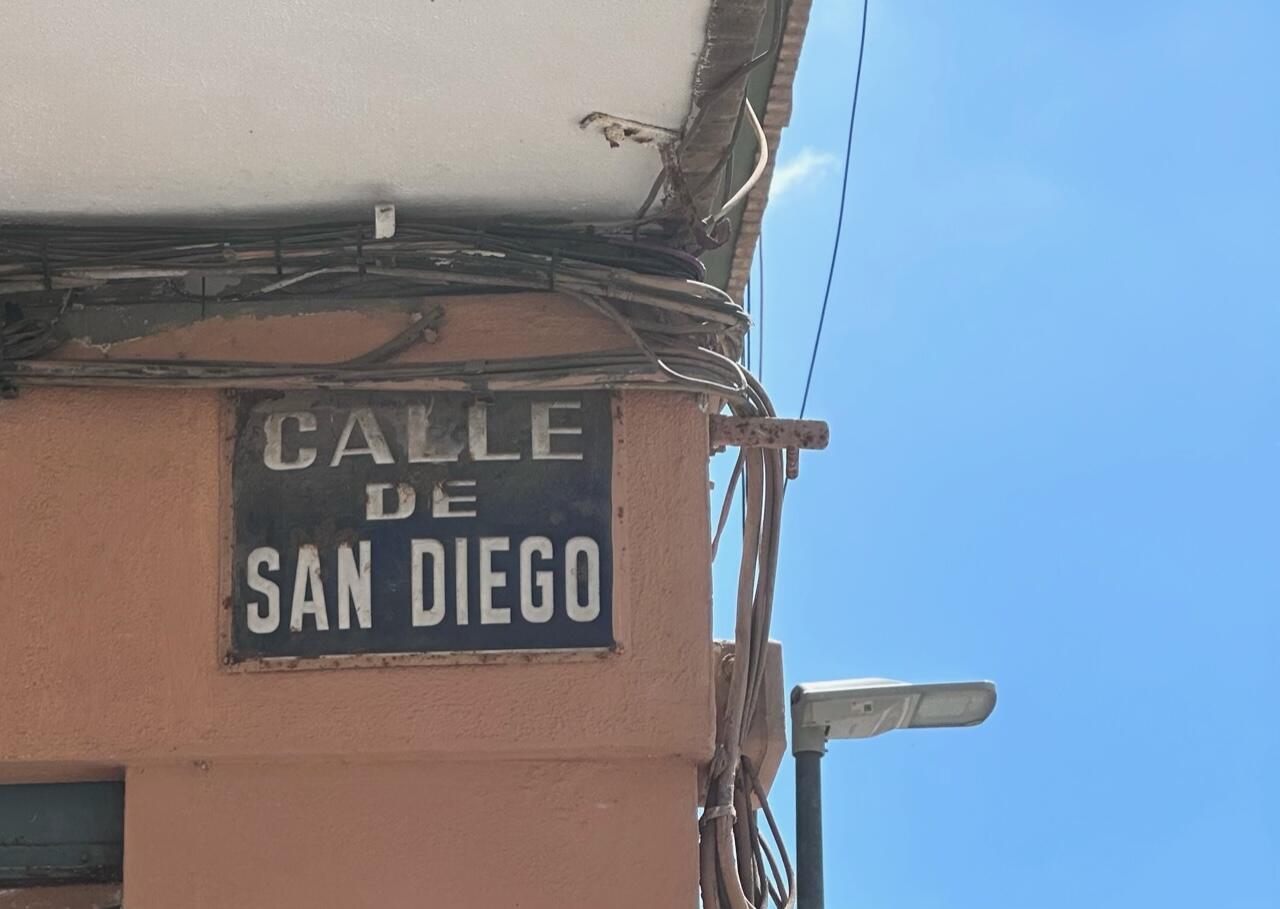
Sydney, Australia
- At July 30, 2023
- By Jessica
- In Travel
 0
0
YA-MA (means hello in the Gamilleroi aboriginal language) Family and Friends,
As lovers of the written word, we are fascinated by the fact that none of the 250 aboriginal languages have an alphabet or any written language. In addition to their oral tradition of storytelling, they express themselves through dance, music, and painting.
This means that it is impossible to misspell a word. As long as you pronounce it properly, the aboriginal interpreters are happy.
In book group we recently discussed the subject of cultural appropriation. This is evident in force here. White guides refuse to interpret aboriginal culture. There seems to be a national understanding of how destructive colonialism has been to the aboriginals and new-found efforts to show respect and make amends.
Today we continued our deep-dive into aboriginal culture with an authentic "interpreter." We sailed to Balangliwoh Island.
E-ora means "the people."
The aboriginal flag, seen more often now flying side by side with the Australian one, is red, yellow, and black. Red for land, yellow for sun, black for the people.
Just think....today the aboriginal tribes comprise two percent of the population. Just 250 years ago it was 100 percent.
No travel experience is complete with sampling the local cuisine. We tasted "bush takka," kangaroo pie and emu sausage rolls.
There are just too many facts and stories to recount here but one of my favorites is about the kasarian trees:
Aborigines call these trees "nature's mothers." Mothers told their children that if they got lost in the bush to find one of these trees to sit under until they're found. The reason is the needles of the Kasarian tree repel snakes.
The Digeradoo not only makes music but attracts emus! Contrary to what we thought, it is not carved. The wood is hollowed out by termites.
Auckland, New Zealand
- At July 23, 2023
- By Jessica
- In Travel
 1
1
It's official. We love Auckland.
It rained again today so we sampled the culinary offerings beginning with a cheese platter at Debrett Kitchens. Dairy products represent 40% of New Zealand's exports (as compared with 11% for lamb). The cheeses were spectacular. We tried cheddar, Brie, and a local Stilton.
We then moved on to the Honest Chocolate Company.
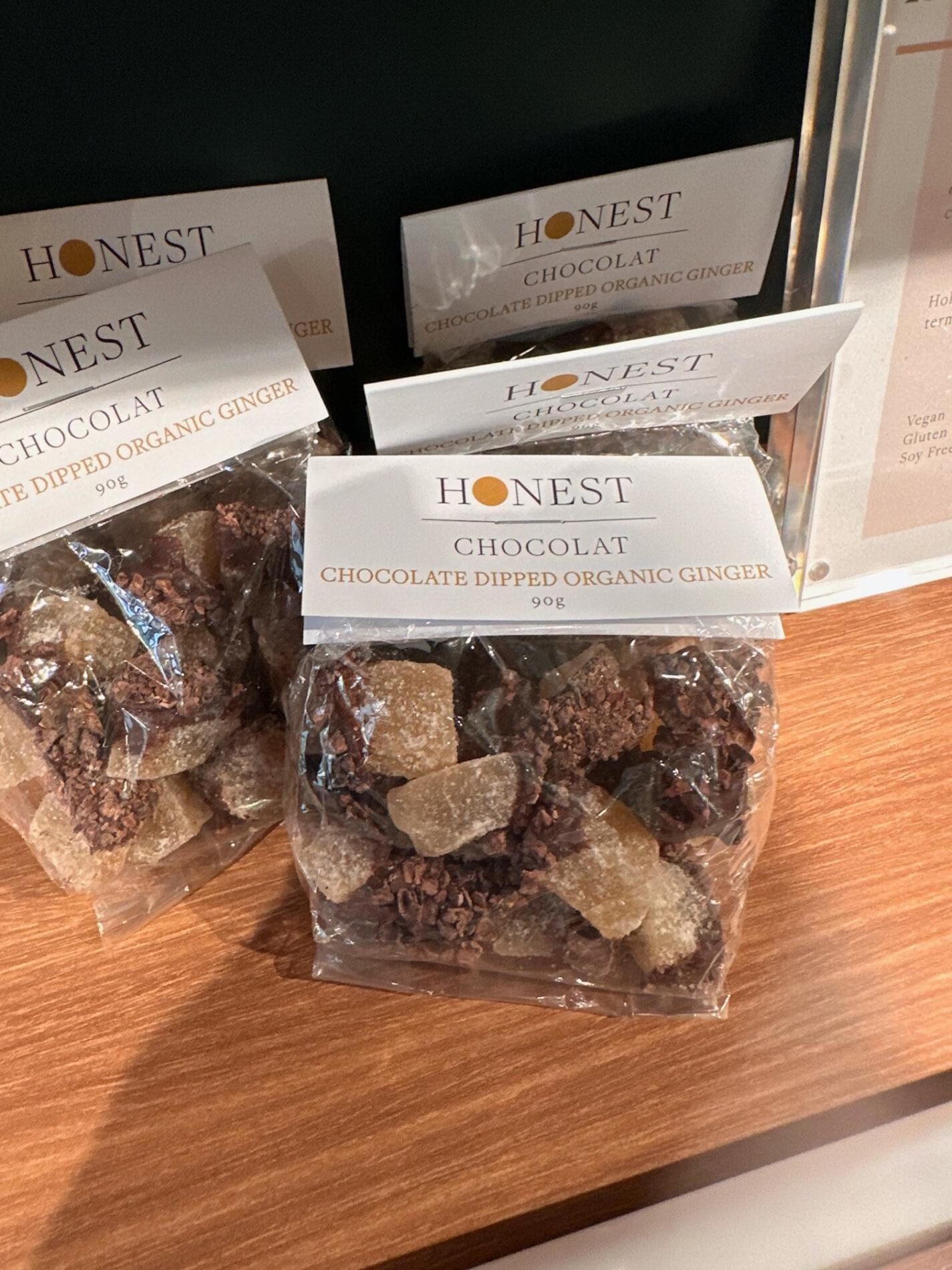
Our favorite was Manuka honey and pear.
We walked through the drizzle to the fish market in the Wynyard section of town where we lunched on oysters and mussels.

After lunch we grabbed a cab to The Art Gallery, a contemporary art museum. Loved the Māori Art.
Tomorrow we arrive in Rotarua, which Jessica refers to as Roto-Rooter.
Crossing the Pacific – Day 1
- At July 16, 2023
- By Jessica
- In Travel
 0
0
Did you know the Pacific Ocean is 64 million square miles? It’s twice the size of the Atlantic, a third of Earth’s surface, 46% of the world’s total water surface, and as deep as 35,797 feet deep at the Mariana Trench.
The Type of Writer I Want To Be
- At November 15, 2015
- By Jessica
- In News
 0
0
The term “social portraiture” turned up in something I read recently and it has stayed in my mind ever since. I think of Tom Wolfe, for example, and his Bonfire of the Vanities. What is most fascinating to me is human behavior in the context of our society. I guess I always felt that way, which is why I loved Balzac’s Cousin Bette and Jane Austin’s Pride and Prejudice, among others. As more exotic societies become more like our own–thanks to globalization, the internet, and easy travel–new writers are emerging who provide insights into the human behavior of those cultures. The differences are delicious, but the overwhelming commonality of drives shared by all members of our species becomes even more obvious. Now I know this isn’t an original thought but as I just finished reading Last Man in Tower by Aravind Adiga this fact hit me in the face like one of the unexpected monsoons described in the book. Adiga’s first novel, The White Tiger, is one of the best books I have read in the past ten years. I’ve come to think of Adiga as India’s Tom Wolfe. These authors, among others, paint verbal portraits not only of their characters but of the societies in which they live.
Last Man in Tower has particular meaning to me as it is about a real estate developer in Mumbai. If you change the name and location he could be any one of my clients in New York. He is trying to buy out the residents of a building called Vishram Society that seems to be structured similarly to a New York co-op. There is a hold-out, a retired school teacher named Masterji, and the story revolves around how his neighbors and friends of thirty+ years react and take action as their potential fortunes are threatened by the obstinate Masterji.
Not as good as The White Tiger, not as much passion or anger, but a convincing glimpse into the changing landscape of Mumbai and the behavior of humans whose goodness and self-interest battle it out.
Worthwhile read: 6
Shanghai Diary
- At November 14, 2015
- By Jessica
- In News
 0
0
Ever hear the expression “Shanghai’ed or Chaing Kai’d”? The correct expression is “Shanghai’d.” It was coined to describe what happened when drunken sailors in the port of Shanghai passed out, were kidnapped, thrown into the brig of a merchant ship, and put into slave labor– more or less.
I sort of got Shanghai’d for a day because the weather was so bad the port was closed, and we had to stay in Shanghai an extra day. And because there were no bus tours we hung our with our new friends from Boston. We had a blast, walked around for miles, did lots of shopping, and ended up at the bar at the Peninsula hotel where we had three Lychee-tinis each! Slept like Ayer’s Rock (oops that was the Australia trip) but IF someone wanted to “Shanghai” us it would have been NO PROBLEM.
Never had such bad weather on a vacation before. It’s miserable to go sightseeing in freezing rain. But we’re having a blast on board where we eat, drink, read and make merry, play bridge, eat and drink, and did I mention eat and drink? There’s a gym, which we have not spent one minute in, and a spa, which we have spent very little time in.
Tomorrow at sea then back in Japan where communicating is forbidden .
Blowing Smoke in Shanghai
- At November 14, 2015
- By Jessica
- In News
 0
0
NEWS FLASH! There are 1.9 billion Chinese and they all smoke! Buy PM, MO, LO and any other cigarette stock you can find. They smoke in office buildings, restaurants, stores, bathrooms. I’m getting some of those surgical masks but not to protect me from the chicken flu…to save me from second hand smoke!
Shanghai has changed so much since I was last here in 2006. Gone are the picturesque alleys with silk ties for $1.00. Prada, Gucci, and Louis Vuitton have taken their places…for twice the price and half the size (dress size…the stores themselves are 10 times as large). There are more skyscrapers than in NY! In fact, Shanghai looks like New York. I’m also surprised that in 10 years English hasn’t taken off. In Moscow, everyone speaks English…
Hong Kong Diary
- At November 14, 2015
- By Jessica
- In News
 0
0
Well…now it’s 2 am and, despite a wonderful dinner with wine, a hot steam bath and a massage my eyes are as open as a Starbucks before the morning rush hour. Yesterday we visited the bird market where old men stroll with their pet birds in cages and chat to catch up. They believe they need to “walk their pets” to take in the fresh air. I’ve got pictures of the bird market and flower market I will send next. We went to the old Jade market in search of a Jade elephant for Olivia, and other presents for the rest of you, but our impression was that the trinkets there were no more jade than my plastic chopsticks are sterling silver.
We stopped for a dim sum lunch, basically dumplings, then visited a Buddhist nunnery after lunch. I must say this old atheist was mighty impressed. Buddhism promotes love, serenity, peace and eradication of suffering. No vengeful gods or Jihads. And those Buddhas are awfully cute! No personal trainers for them for sure.
Took a rest in the late afternoon then Dad and I went to Hutong for dinner. It looks like the Spice Market in New York but we had views of Hong Kong island and the nightly light show. The food was divine – it was the Beggars Chicken that we ordered in advance from the US and it was worth every effort. Very “in” restaurant and best chicken ever! Dad was a little scared to smash the clay with the duly provided mallet but once he got into it his aggression and his ancestors aggression were released! Amen.
Taiwan Diary
- At November 14, 2015
- By Jessica
- In News
 0
0
Who remembers that joke about the jackrabbit in Wyoming? About all he does is eat, sleep and hop around a bit. Well…that’s us! Weather still dreadful, which does put a damper on things. Today we woke up at 4, ate a huge breakfast, headed out at 7:30 am to explore Taiwan. The residential buildings are quite dilapidated, not at all new and shiny like Singapore as I expected. Reminds me of Moscow. There are beautiful shrines erected for the martyrs of the revolution and, of course, Chiang Kai-shek . I wish I knew more about Chinese history but based on the little I have read I know that the Japanese were quite aggressive in trying to conquer China during the 1930s and 40s. A Chinese Civil War was brewing between the corrupt and brutal Nationalist party of Chiang Kai-shek, called the Kuomintang, and Mao’s communist party. Well, we all know who won but the Nationalists fled with 3 million people and most of ancient China’s art treasures when the Japanese lost WWII and Taiwan in 1947. We went to this National Palace museum today in Taiwan housing all the treasures of ancient China and it is astounding. Then we ate a huge lunch, played scrabble, took a nap and will be off to a huge dinner soon.
We’re going to the jade market, an ancient nunnery, meeting a lawyer friend of Eberhard’s for tea, and then having dinner at a famous restaurant called Hutong where we ordered “Beggar’s Chicken” in advance. They bake it in wet clay and you get a hammer to crack open the shell.


